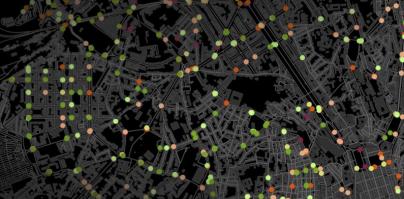 From sexual harassment, to surveilling regulators, to Uber drivers and taxi drivers committing suicide (because they can’t make a living) the pervasive creepiness of Uber continues to spread while the means of corraling this societal phenomenon creeps steadily forward like sclerotic mid-town traffic. The latest chapter in the Uber saga is unfolding in New York where court rulings (in line with similar rulings in California) may force gig drivers to be treated as employees just as the New York City Council is considering freezing for-hire licenses to combat negative urban traffic consequences.
From sexual harassment, to surveilling regulators, to Uber drivers and taxi drivers committing suicide (because they can’t make a living) the pervasive creepiness of Uber continues to spread while the means of corraling this societal phenomenon creeps steadily forward like sclerotic mid-town traffic. The latest chapter in the Uber saga is unfolding in New York where court rulings (in line with similar rulings in California) may force gig drivers to be treated as employees just as the New York City Council is considering freezing for-hire licenses to combat negative urban traffic consequences.
Multiple studies show the onset of ride hailing apps such as Uber, Lyft, Via, Yandex, Grab and others around the world are driving up urban traffic congestion and undermining public transportation. The latest moves in New York, however, highlight the favor felt by under-served minority communities when it comes to fulfilling their ad hoc local transportation needs. In New York, and elsewhere, traditional Yellow Cabs have a reputation of insufficiently servicing minority riders (i.e. not stopping to pick them up) and their communities (i.e. refusing to drive to particular neighborhoods).
In New York, civil rights organizations and leaders including the New York Urban League and the Reverend Al Sharpton’s National Action Network have come out in opposition to the freeze on for-hire licenses and in support of Uber. These two currents perfectly capture the conundrum of a service that undercompensates drivers, many of whom are immigrants from minority communities, while providing superior service to those same minority and immigrant communities.
Let’s not get carried away, though, because Uber (and Lyft etc.) drivers are also well known for choosing not to accept certain fares (even though they may suffer app-based consequences). It’s not a perfect solution.
The New York Times chimed in with its own editorial solution of a minimum wage for gig economy drivers and a hike in taxi fares along with congestion charging for drivers of privately owned vehicles entering the city. The Times would prefer to see some balance restored in the transportation network between individual vehicles and public means of transportation.
That’s right. Autonomous taxis can be more effectively managed and regulated and won’t discriminate regarding passengers or destinations. A recently published study modeling the creation of an automated taxibot-centric transportation network in Lisbon, Portugal, found that 90% of cars could be eliminated and commute times reduced though traffic would remain depending upon the degree of reliance on the taxibots.
– Urban Mobility System Upgrade – International Transportation Forum
The pressure is growing on Uber et. al. to compensate drivers fairly and treat them as employees. Uber continues to be forced out of particular cities and countries – or to sell off its assets to local competitors.
The resistance to freezing for-hire licenses in New York City is a recognition that Uber and competing services have a significant driver turnover problem – as well as a surfeit of drivers only working part-time. Freezing licenses could actually improve the compensation picture for the remaining drivers, but might limit the availability of the service.
But all of this regulatory and legal attention reflects the reality that the Uber model works against both the gig drivers and the regulated and licensed taxi drivers. What is worse is that taxi operators around the world have demonstrated an almost comprehensive inability to compete – dependent as they have become on regulated fares and licensing that render them more or less defenseless.
The combination of regulatory and growing urban gridlock have set the stage for a combined downward spiral in the quality of service for taxis, ride hailing services and public transportation. What looks to an Uber et. al. passenger as a win-win is actually a lose lose.he only answer, it seems, is taxibots. So, I guess that means we’re facing another 5-10 years of sexual harassment, regulatory surveillance and taxi (and Uber) driver suicides along with declining public transit performance. It’s a small price to pay for a cheap cab ride, or is it?
Share this post via:






Quantum Computing Technologies and Challenges